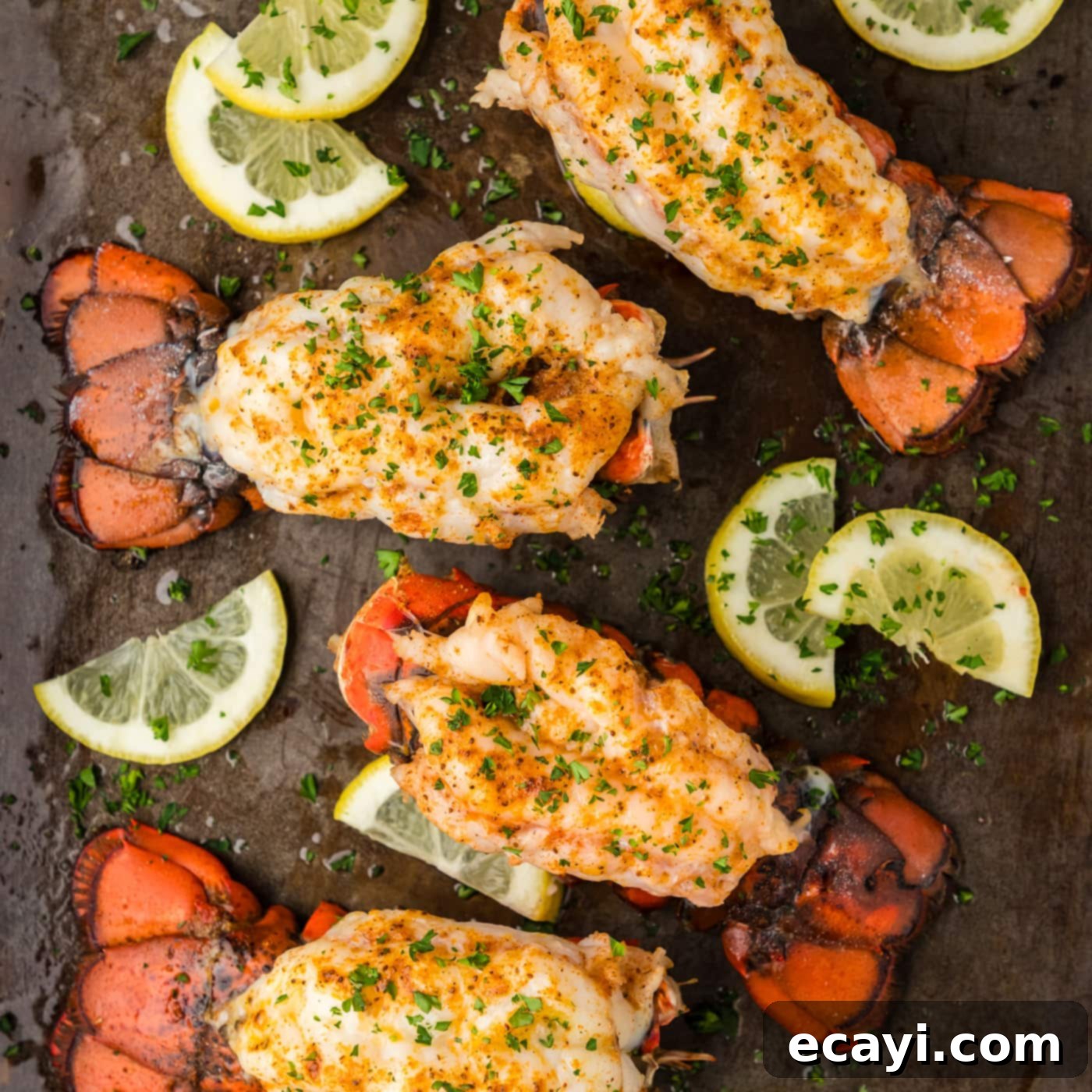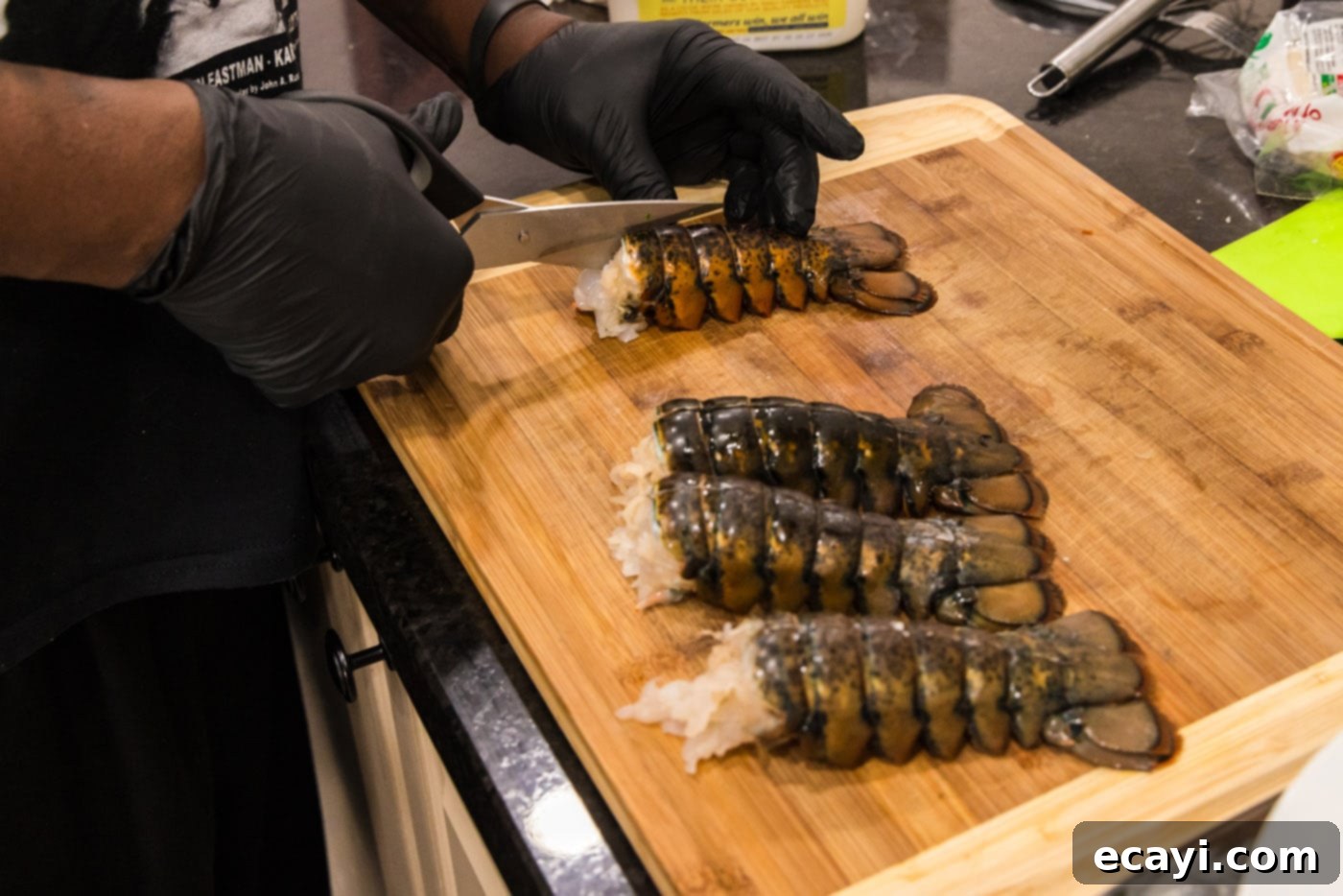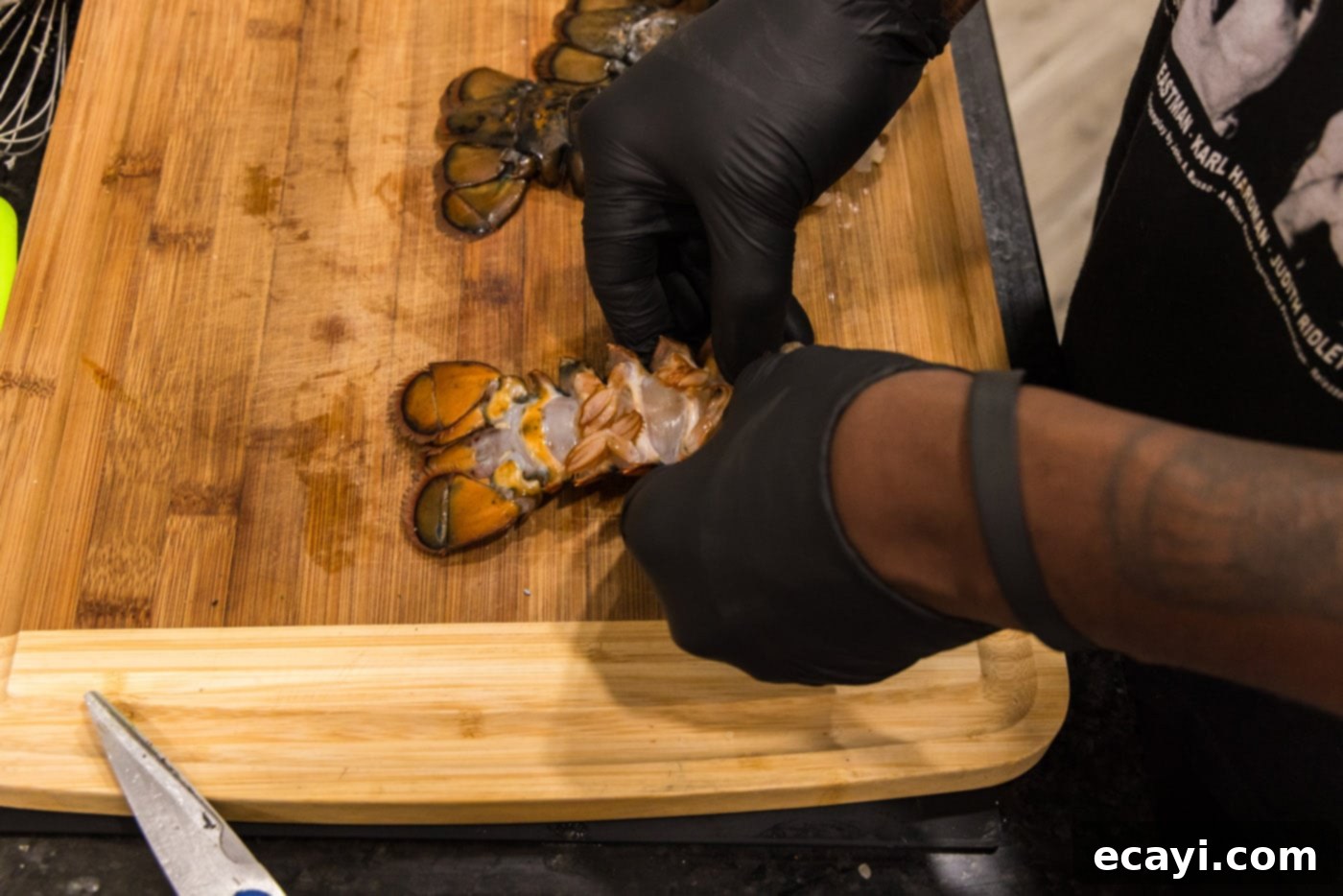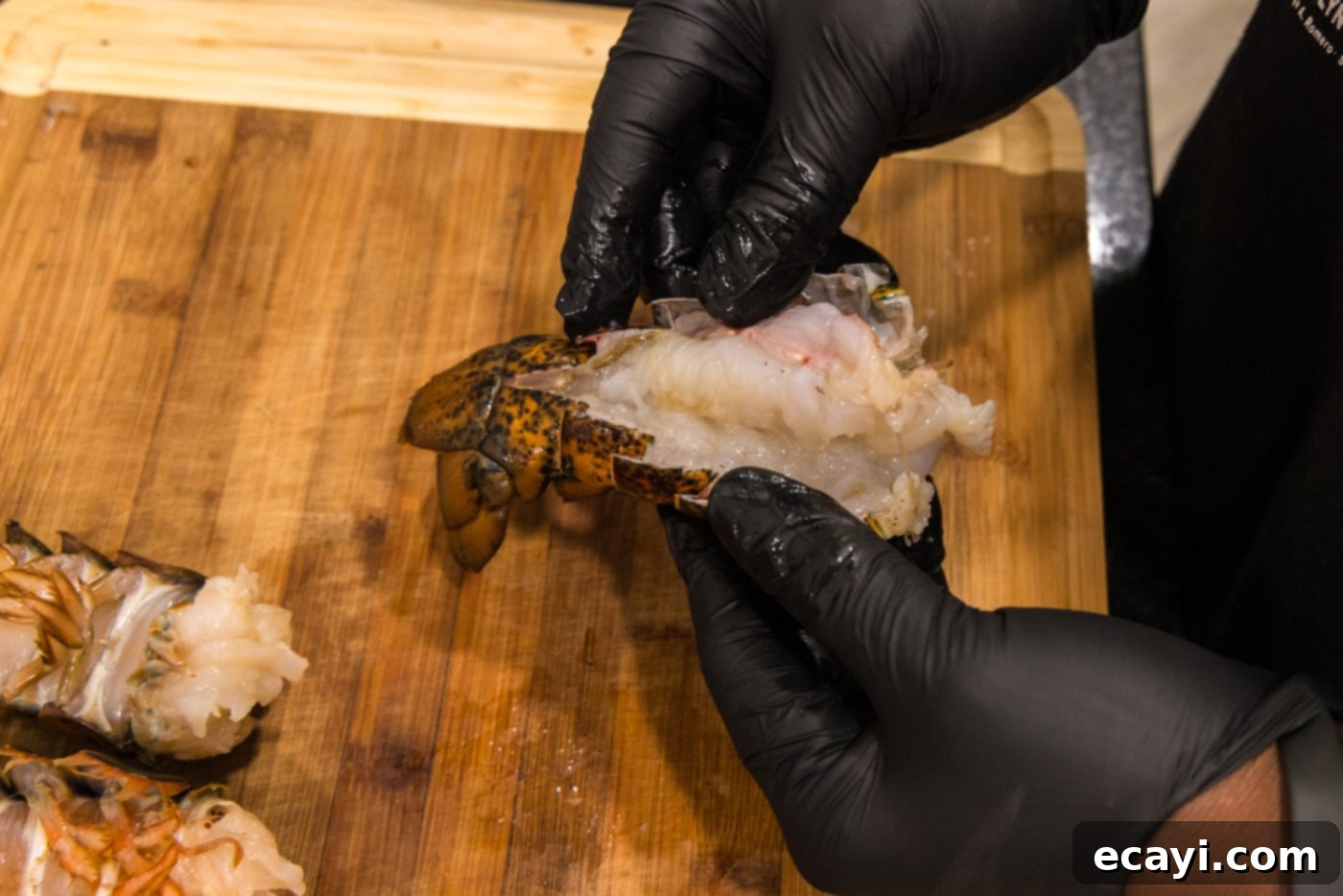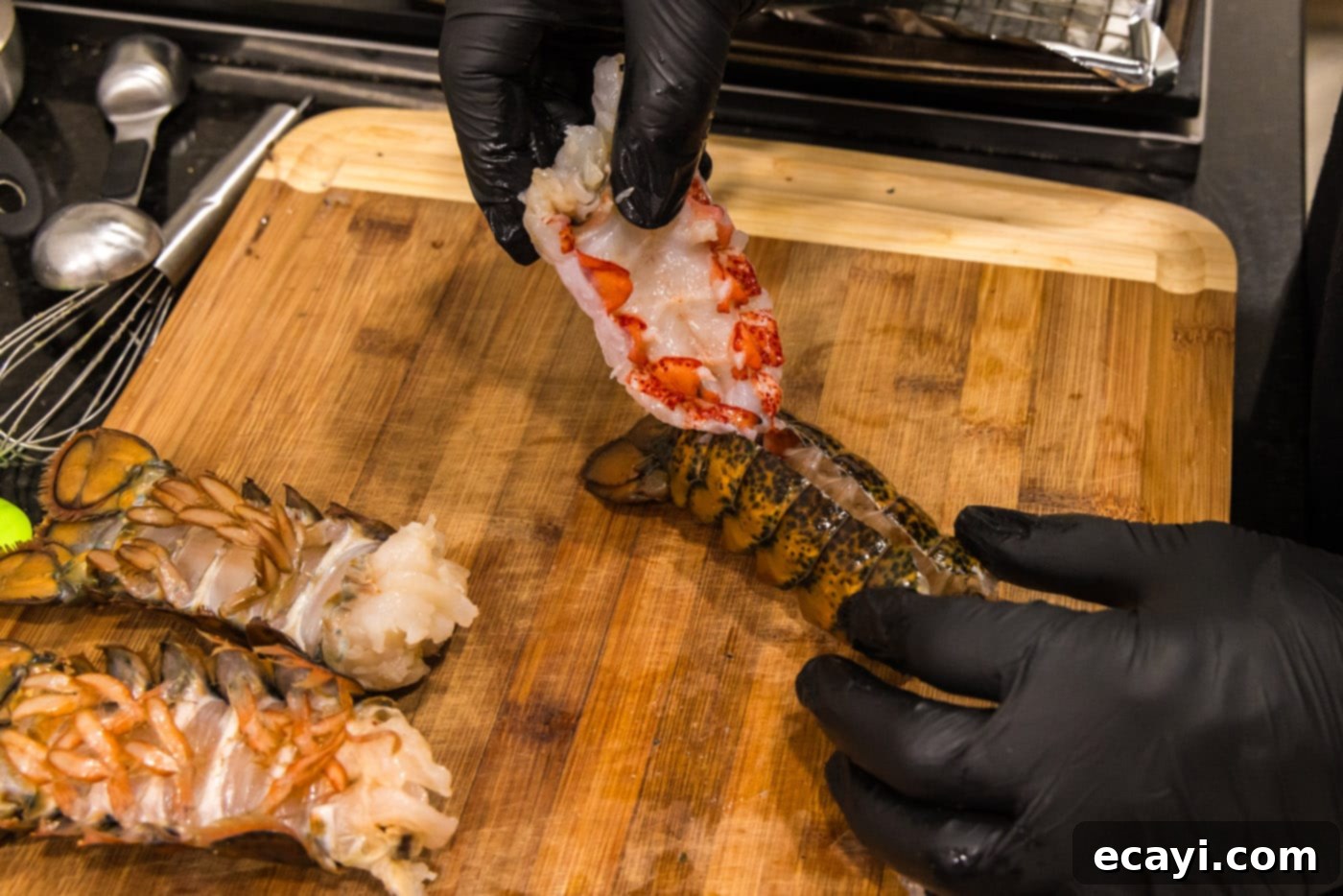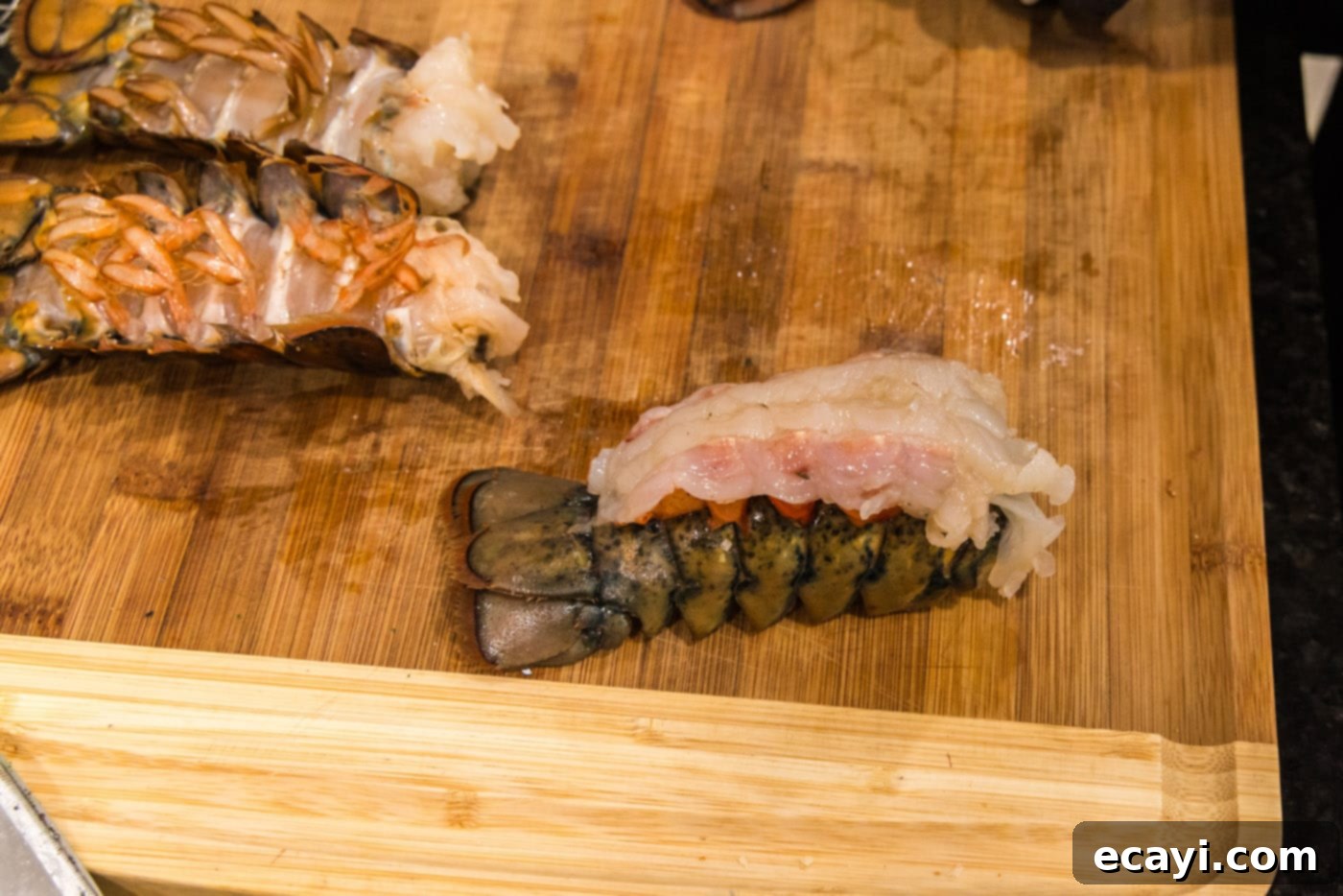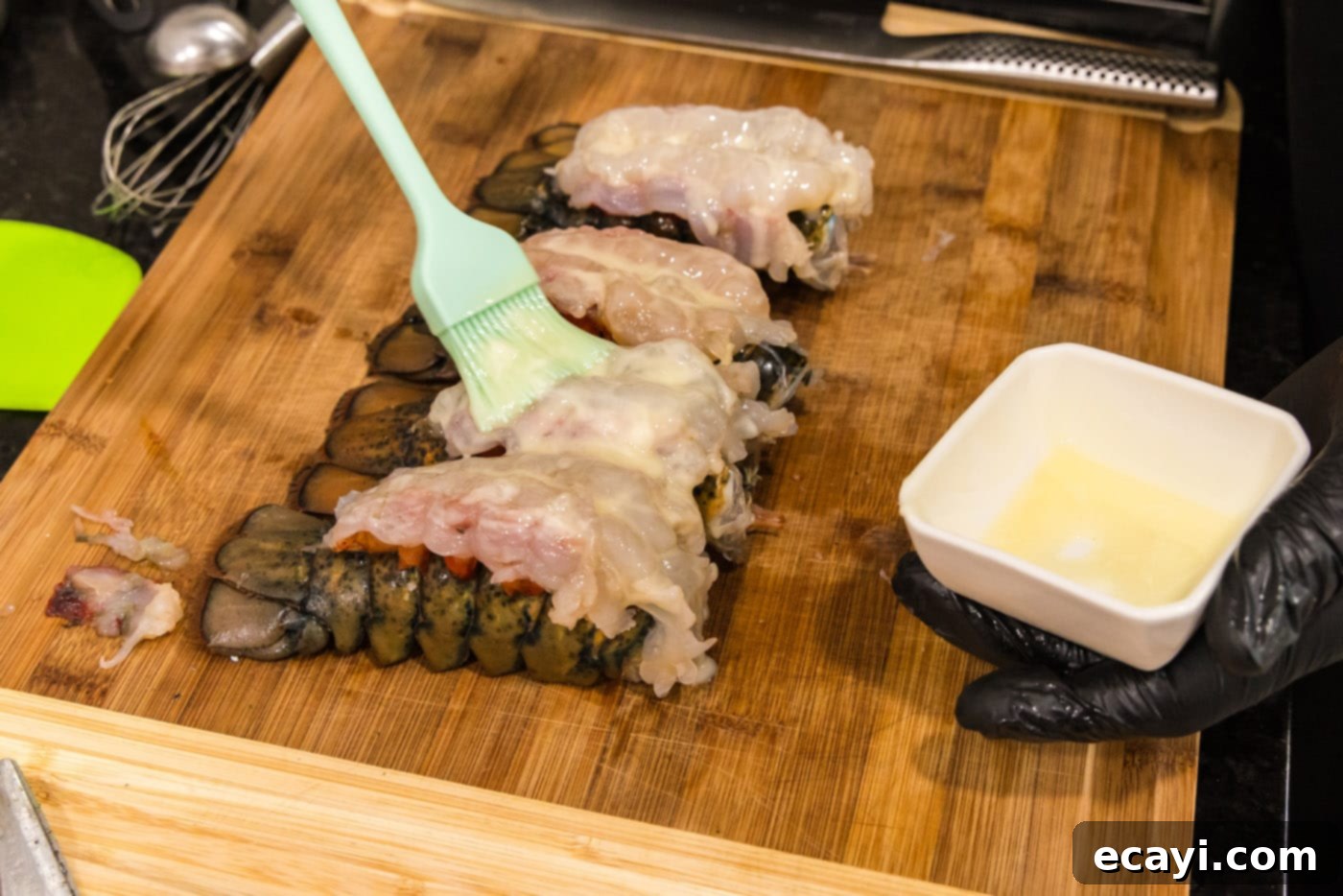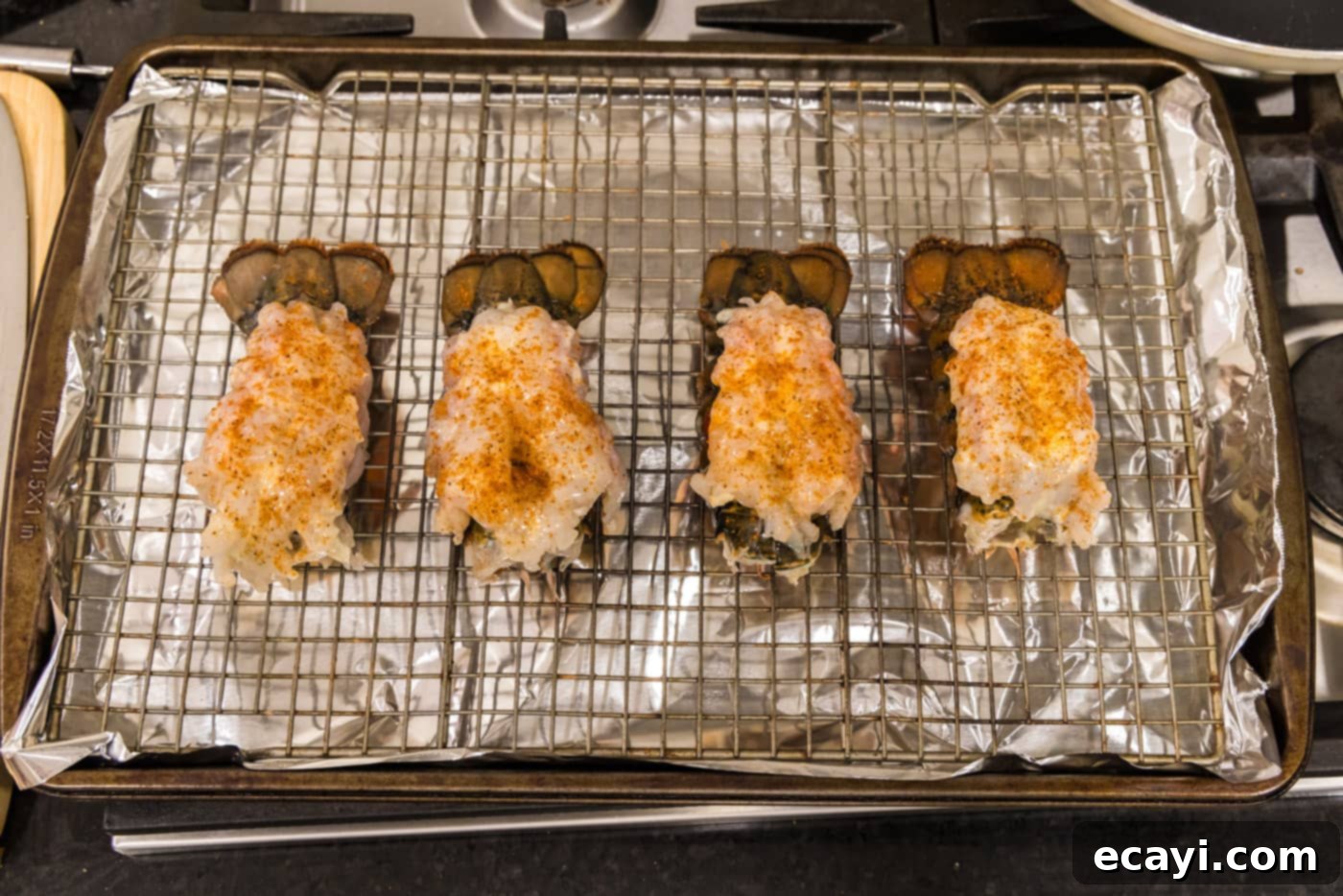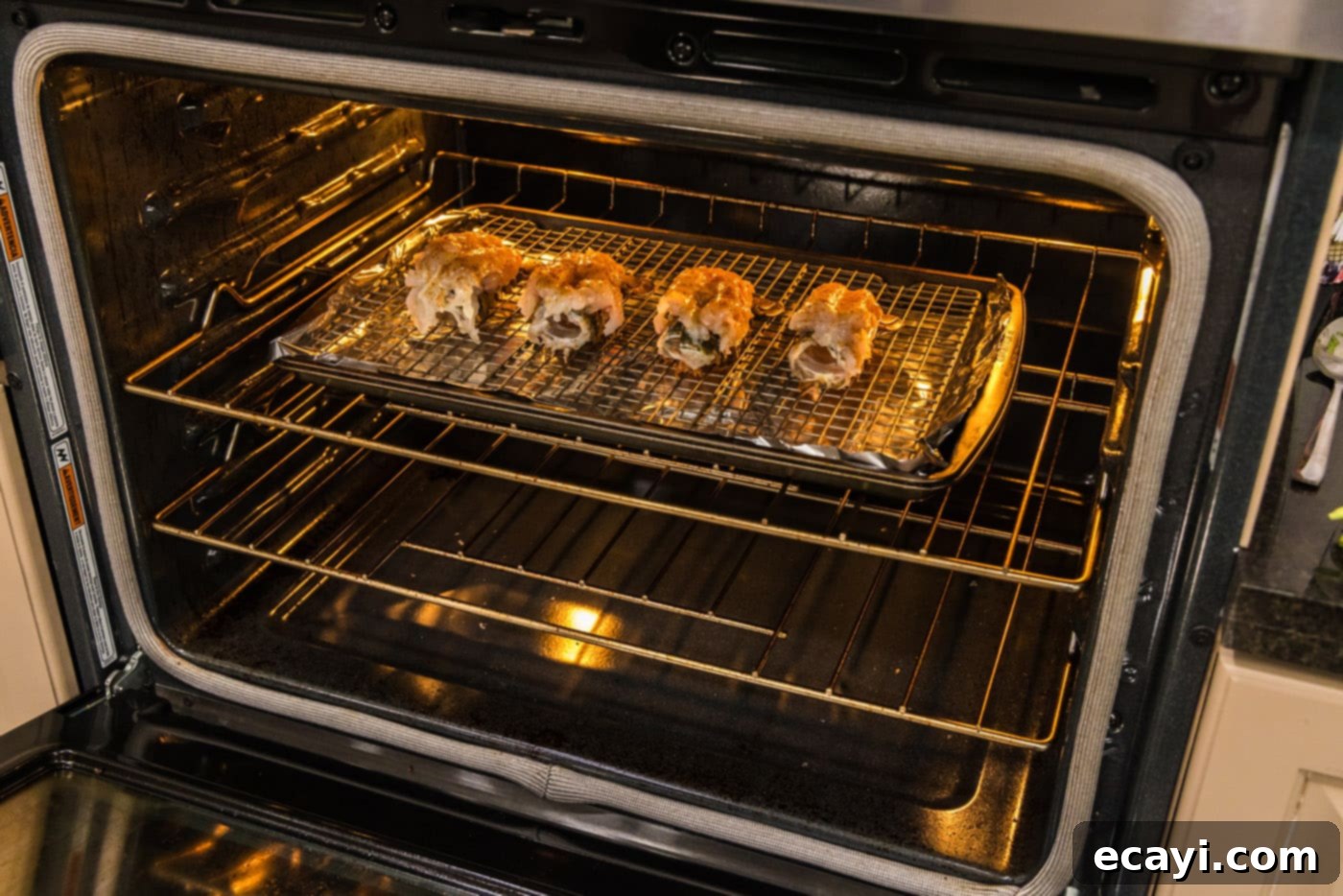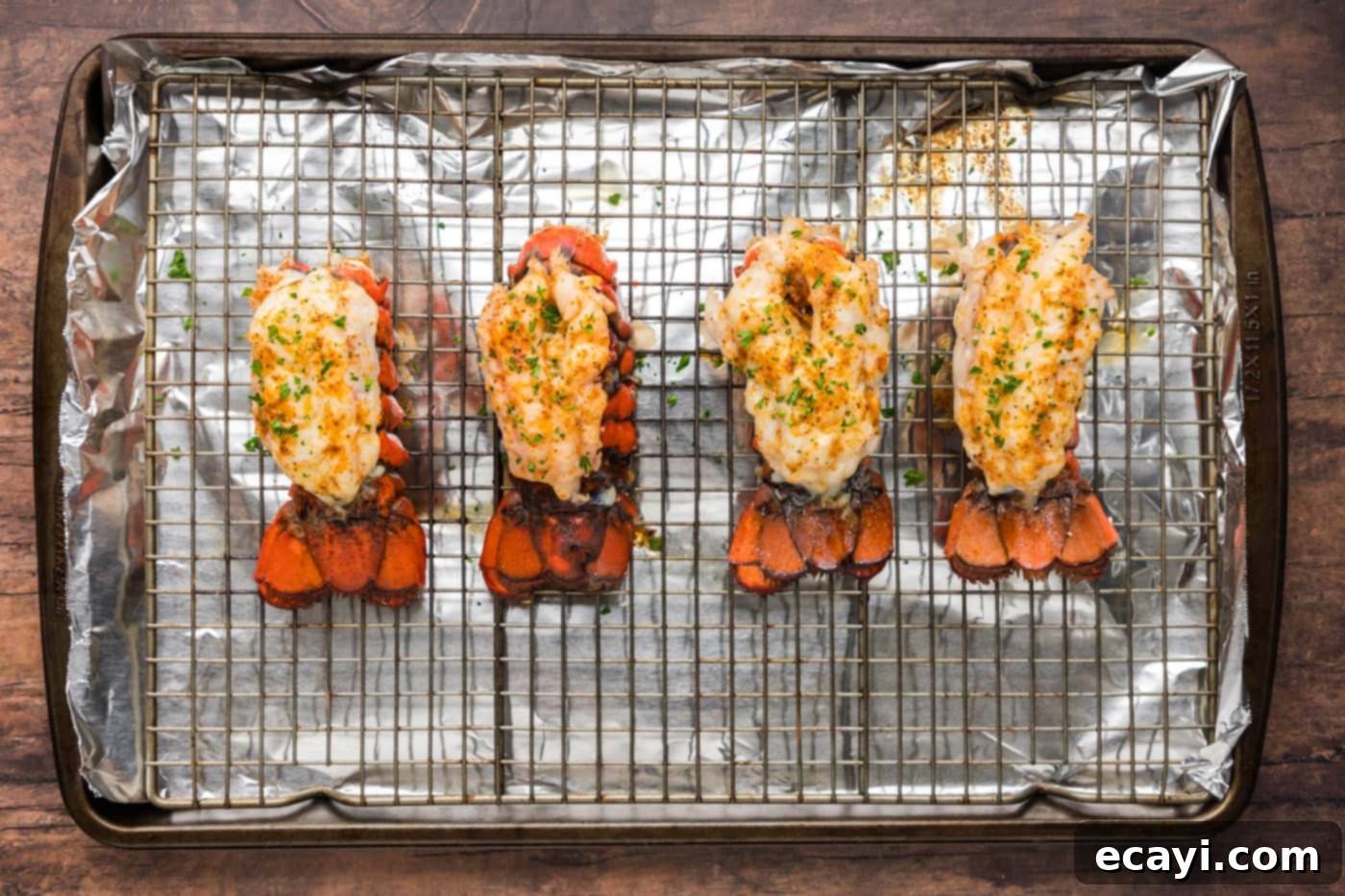Effortless Elegance: Perfectly Baked Lobster Tails with Butter and Old Bay in 15 Minutes
Imagine serving a dish that looks incredibly impressive, tastes divine, yet takes minimal effort and only about 15 minutes of baking time. Our super easy baked lobster tail recipe delivers exactly that! With just a touch of melted butter and a sprinkle of savory Old Bay seasoning, you can transform fresh lobster tails into a succulent, restaurant-quality meal right in your own kitchen. This guide will walk you through every simple step, ensuring a perfect result every time.
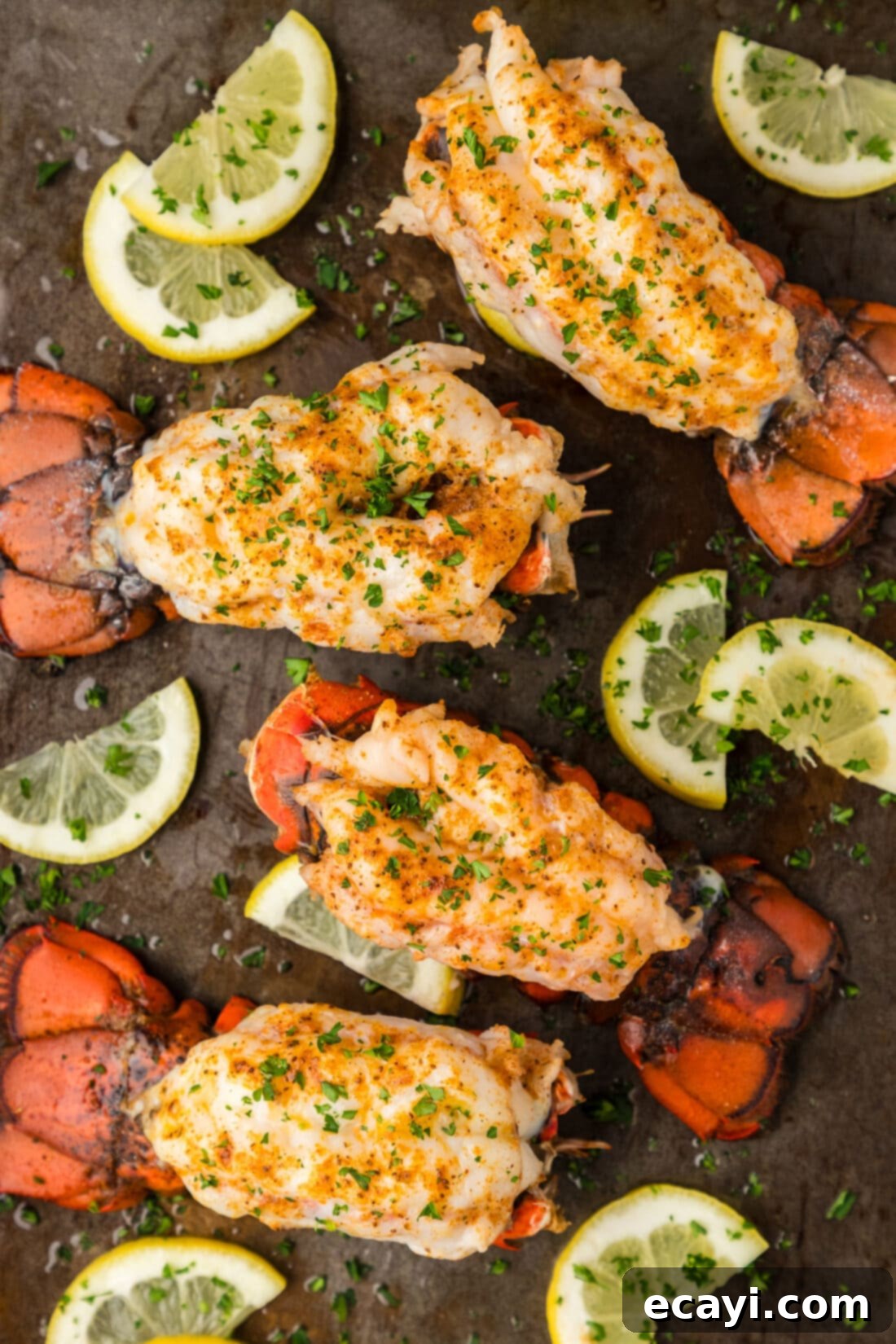
Why This Recipe Works: Simplicity Meets Gourmet Flavor
This baked lobster tail recipe stands out for its elegant simplicity and incredible results. It demystifies what many consider a fancy, intimidating dish, making it accessible for home cooks of all skill levels. We start by “crowning” the lobster meat, a simple technique that not only creates a stunning presentation worthy of any special occasion but also helps the lobster cook evenly and absorb more flavor. A generous baste of melted butter and a classic sprinkle of Old Bay seasoning infuse the sweet lobster meat with rich, savory notes that are utterly irresistible.
The entire process, from prep to table, can be accomplished in under 30 minutes, with actual baking time taking a mere 15 minutes. This makes it an ideal choice for busy weeknights when you crave something special, or for entertaining guests when you want to impress without being stuck in the kitchen. Once you experience the joy of sinking your teeth into tender, juicy, and buttery lobster meat that you’ve prepared yourself with such ease, you’ll be finding every excuse to bake it again and again.
While there are many excellent ways to prepare lobster tail – including steaming, and grilling – baking offers a unique advantage. It creates a slightly firmer texture while locking in moisture, resulting in a wonderfully succulent bite. Steaming provides a delicate, moist texture, while grilling imparts a smoky char. Ultimately, the best method often boils down to individual preference and the desired flavor profile for your meal. However, for a foolproof, hands-off approach that guarantees deliciousness, baking is a top contender.
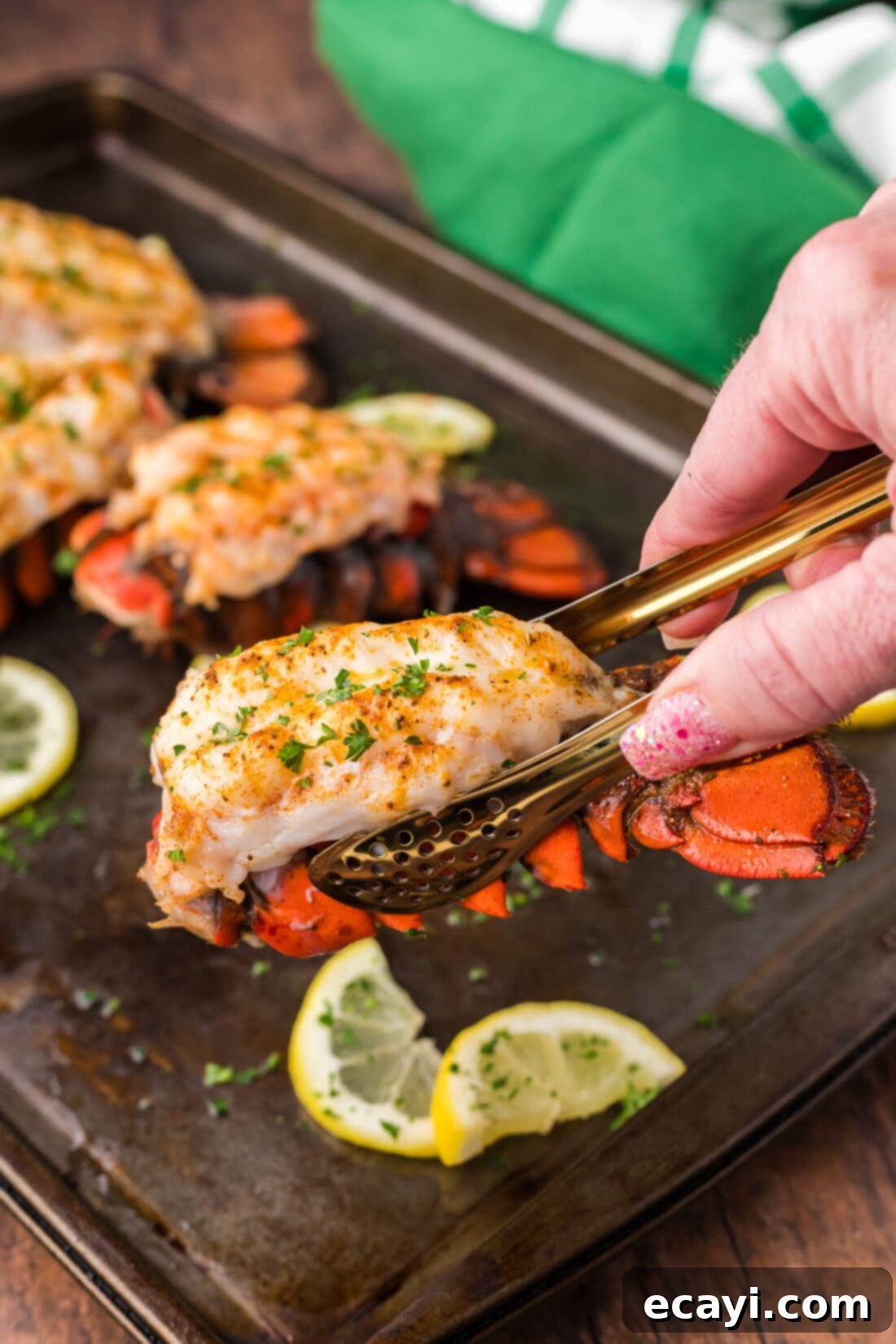
Essential Ingredients for Your Baked Lobster Tails
Crafting exquisite baked lobster tails requires only a handful of high-quality ingredients. The beauty of this recipe lies in letting the natural sweetness of the lobster shine, enhanced by simple yet impactful flavors. Below, you’ll find a summary of the key components. For precise measurements and a comprehensive list of instructions, please refer to the printable recipe card located at the conclusion of this post.
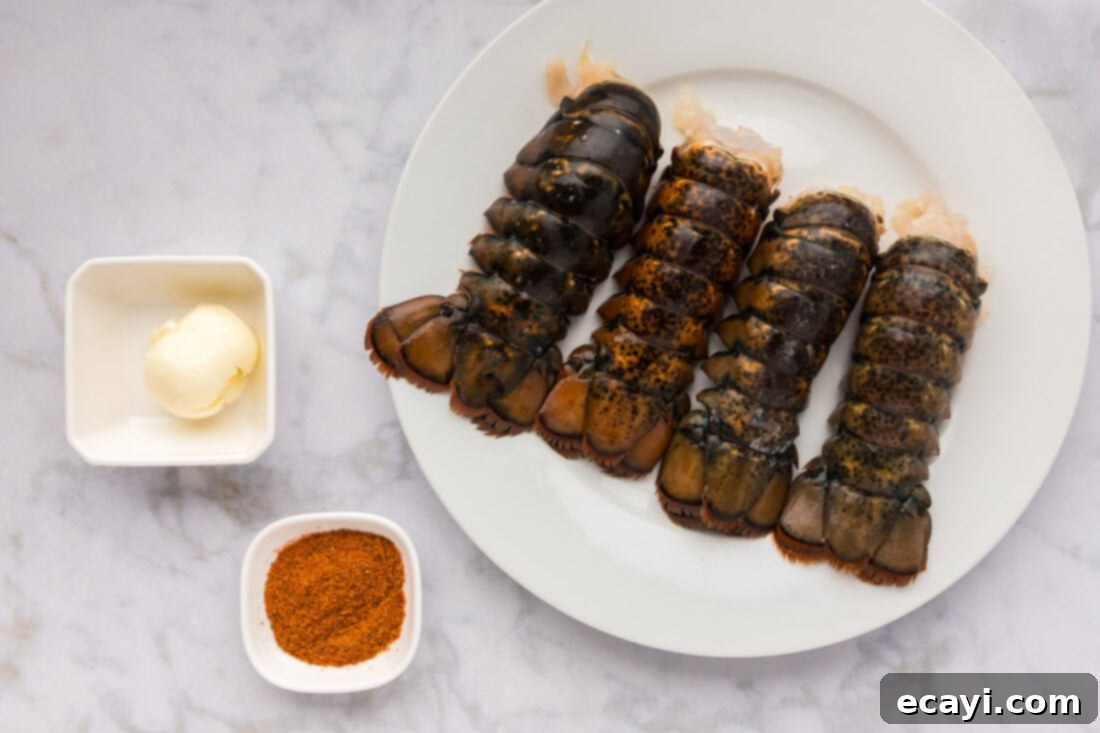
Ingredient Insights and Flavor Variations
Understanding your ingredients and having options for substitution can elevate your cooking experience and allow for creative variations.
- LOBSTER TAILS: The quality of your lobster tails is paramount. For the best flavor and texture, always purchase frozen lobster tails. Look for cold-water lobster tails (like those from Maine, Canada, or South Africa) as they generally have sweeter, firmer meat compared to warm-water varieties (often from the Caribbean). Defrosting them properly is crucial: transfer them from the freezer to the refrigerator and allow them to thaw overnight. Avoid rapid thawing methods like hot water, which can toughen the meat. When preparing the tails, if you observe a dark line running through the flesh, this is the digestive tract. It’s best to remove this before cooking for a cleaner taste and presentation. Simply use a small knife or your fingers to pull it out.
- UNSALTED BUTTER: Melted butter is the backbone of this recipe, providing richness and helping the seasoning adhere. We recommend unsalted butter to control the overall sodium content, especially if your Old Bay seasoning already contains salt. For an extra layer of flavor, consider infusing the melted butter with minced garlic, a squeeze of fresh lemon juice, or a pinch of fresh herbs like parsley or chives. Clarified butter (ghee) is another excellent option, offering a purer butter flavor and higher smoke point, though not strictly necessary for this baking method. For a lighter touch, you could substitute olive oil, but it will significantly change the flavor profile.
- OLD BAY SEASONING: This iconic Maryland seasoning blend is a classic pairing for seafood for a reason. Its unique mix of celery salt, paprika, black pepper, red pepper, and other spices brings a bold, savory, and slightly spicy kick that complements the sweet lobster beautifully. If you prefer a different flavor or don’t have Old Bay on hand, you have several options:
- Cajun Seasoning: For a spicier, more robust profile, Cajun seasoning works wonderfully with lobster.
- Garlic Herb Blend: A simple mix of garlic powder, onion powder, dried parsley, dried dill, salt, and black pepper can create a fragrant and delicious alternative.
- Lemon Pepper: For a bright, zesty flavor, lemon pepper seasoning is a fantastic choice. You can also add fresh lemon zest directly to the butter or sprinkle it over the cooked lobster.
- Paprika & Salt: A simple combination of smoked paprika (for depth) and sea salt can be surprisingly effective, allowing the lobster’s natural taste to dominate.
Feel free to experiment with your favorite blend to customize the taste to your liking.
Step-by-Step Guide to Perfect Baked Lobster Tails
These step-by-step photos and instructions are here to help you visualize how to make this recipe, ensuring success from start to finish. You can Jump to Recipe to get the printable version of this recipe, complete with precise measurements and instructions at the bottom of this page.
- Preheat Your Oven: Begin by preheating your oven to 400°F (200°C). It’s essential to allow your oven ample time to reach and maintain the correct temperature for even cooking. Using an oven thermometer can help verify accuracy.
- Prepare the Lobster Tails: Thoroughly rinse the defrosted lobster tails under cold running water. Pat them completely dry with paper towels. Drying the tails is a crucial step as it prevents steaming in the oven and helps achieve a more tender texture while allowing the butter and seasoning to adhere better.
- Cut the Shell: Place the lobster tail belly-side down on a cutting board. Using sturdy kitchen shears, carefully cut down the middle of the hard top shell, starting from the head end and stopping just before the tail fin. Be careful not to cut through the meat itself, only the shell.
EXPERT TIP: Chef Antoine suggests wearing vinyl gloves whenever handling raw meat, especially seafood, for hygiene and a better grip.

- Loosen and Lift the Meat: Gently turn the tail over. Using your gloved fingers, carefully loosen the meat from the shell, particularly near the head end. Slowly and carefully lift the entire piece of lobster meat out from the shell, being sure to leave it connected at the very base, near the tail fin. This connection point will hold the meat in place for crowning.


- Crown the Lobster: Gently push the two halves of the empty tail shell back together underneath the lifted meat. Then, carefully rest the lifted lobster meat on top of the closed shell. This technique is known as “crowning,” and it creates a beautiful presentation while ensuring the lobster cooks evenly.


- Brush with Butter: Using a pastry brush, generously coat the exposed lobster meat with melted unsalted butter. Ensure an even application for maximum flavor and moisture during baking.

- Season Both Sides: For optimal flavor distribution, season both sides of the lobster meat with Old Bay. First, gently lay the crowned tails upside down on your work surface, so the buttered meat rests directly on it. Sprinkle the underside of the meat (which was previously inside the shell) with Old Bay. Then, carefully return the meat to its crowned position on top of the shell and generously season the exposed, buttered side with Old Bay. This ensures every bite is bursting with flavor.
- Prepare for Baking: Place the crowned and seasoned lobster tails onto a wire rack set over a baking sheet. Using a wire rack is crucial as it allows hot air to circulate all around the lobster, ensuring even cooking and preventing the bottom of the tails from becoming soggy.

- Bake to Perfection: Transfer the baking sheet with the lobster tails to your preheated oven. Bake for 12-15 minutes. The precise baking time will vary depending on the size of your lobster tails. Smaller tails (3-4 ounces) will cook faster, while larger ones (6-8 ounces) will require a few extra minutes. The lobster meat should turn opaque and white, with a slightly firm texture.


Frequently Asked Questions & Expert Tips
While lobster is undeniably best enjoyed immediately after cooking, you can certainly store any leftovers. Place them in an airtight container or wrap them securely in aluminum foil. Stored this way, baked lobster tails will keep fresh in the refrigerator for 3-4 days. You can store the lobster meat with or without the shell, though removing it can save space and make reheating easier. To prevent the meat from drying out, consider drizzling a little melted butter over it before storing.
To reheat baked lobster tails without drying them out, preheat your oven to 350°F (175°C). Add a few small pats of butter directly onto the lobster meat to help retain moisture and enhance flavor. Wrap each tail tightly in aluminum foil to create a steaming effect. Place the wrapped tails on a baking sheet and reheat in the oven for about 10 minutes, or until just warmed through. Overheating will make the lobster tough. Leftover lobster meat is also fantastic for transforming into other delicious dishes, such as our popular lobster mac and cheese!
For perfectly cooked, safe, and tender lobster, the internal temperature should reach 140°F (60°C). Use an instant-read thermometer inserted into the thickest part of the meat to accurately check the temperature. It’s important to note that lobster tails will continue to cook slightly (carryover cooking) even after they are removed from the oven, so taking them out just shy of 140°F (around 135°F-138°F) can prevent overcooking. The meat should be opaque and white, without any translucent areas.
The number of lobster tails per person depends on their size and whether lobster is the main course or part of a larger meal. For individual servings, one 3-5 ounce tail per person is generally sufficient if accompanied by hearty side dishes. If lobster is the star of the show or if the tails are smaller (2-3 ounces), you might consider serving two per person. Larger tails (6-8 ounces) are often enough as a single, generous main course.
While it is technically possible to cook frozen lobster tails, we strongly recommend thawing them first. Cooking from frozen can lead to uneven cooking, where the outside cooks too quickly and becomes tough before the inside is fully cooked. Thawing overnight in the refrigerator ensures the meat cooks evenly, remains tender, and absorbs flavors more effectively. This simple prep step makes a big difference in the final quality of your dish.
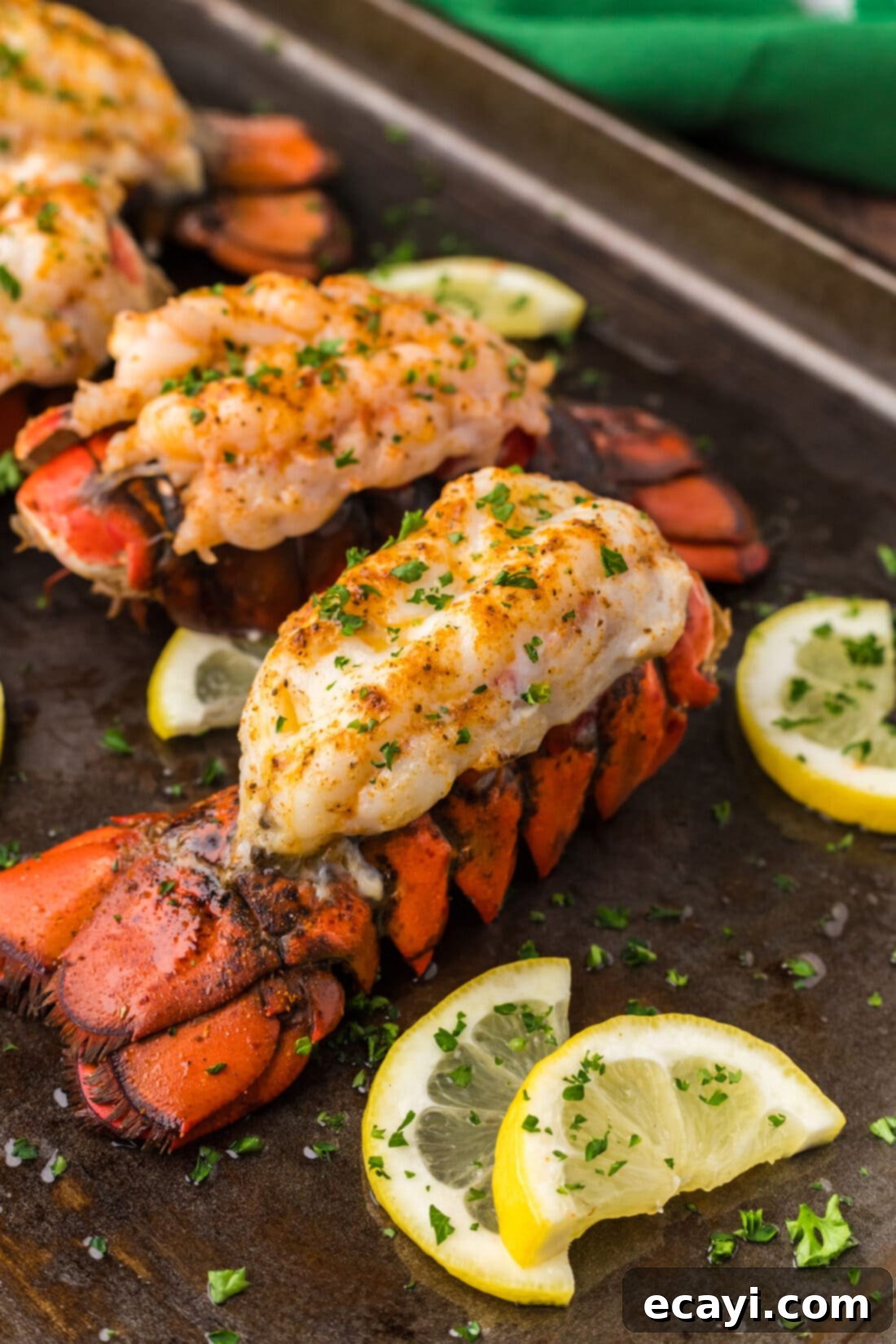
Elevate Your Meal: Delicious Serving Suggestions
Baked lobster tails are inherently luxurious, making them the perfect centerpiece for a special meal. The simple elegance of this dish means it pairs beautifully with a wide array of side dishes, allowing you to tailor your meal to any occasion.
- Classic Pairings: For a traditional steakhouse experience, serve your baked lobster tail alongside a perfectly cooked, juicy steak (surf and turf!), a fluffy loaded baked potato, and crisp steamed asparagus or green beans.
- Light & Fresh: For a lighter, summery meal, pair the lobster with a refreshing garden salad featuring a light vinaigrette, some grilled corn on the cob or slow cooker corn on the cob, and a side of lemon-infused couscous or quinoa.
- Rich & Indulgent: If you’re looking to create an extra decadent experience, consider serving it with creamy risotto, a rich pasta dish like our lobster mac and cheese, or even polenta.
- Essential Accompaniments: Always have extra melted butter on the side for dunking. A simple bowl of warm drawn butter, optionally enhanced with minced garlic or a squeeze of lemon juice, is a non-negotiable for true lobster lovers. A fresh wedge of lemon is also essential, adding a bright, acidic counterpoint to the rich seafood. Garnish with a sprinkle of fresh chopped parsley for a pop of color and herbaceous note.
Discover More Delicious Lobster Recipes
If you’ve fallen in love with cooking lobster, there are many other incredible dishes to explore. From vibrant salads to rich pasta, lobster’s versatility shines in a variety of culinary creations. Here are a few more favorites to inspire your next seafood adventure:
- Lobster Salad
- Lobster Risotto
- Lobster Newburg
- Lobster Thermidor
- Lobster Mac and Cheese
I love to bake and cook and share my kitchen experience with all of you! Remembering to come back each day can be tough, that’s why I offer a convenient newsletter every time a new recipe posts. Simply subscribe and start receiving your free daily recipes!

Baked Lobster Tail
IMPORTANT – There are often Frequently Asked Questions within the blog post that you may find helpful. Simply scroll back up to read them!
Print It
Pin It
Rate It
Save ItSaved!
Ingredients
- 12 ounces lobster tails Four 3 ounce tails
- 1 Tablespoon unsalted butter melted
- Old Bay seasoning to taste
Things You’ll Need
-
Baking sheet
-
Wire cooling rack
-
Vinyl gloves
-
Kitchen scissors
Before You Begin
- For the best flavor and texture, purchase frozen lobster tails and defrost them overnight in the refrigerator. Avoid buying pre-thawed tails at the store. Before cooking, if you notice a dark line in the flesh, this is the digestive tract and should be removed.
- While baked lobster is most delicious served immediately, leftovers can be stored. Place them in an airtight container or wrap securely in aluminum foil and refrigerate for 3-4 days. You can store the meat with or without the shell.
- To gently reheat lobster tails, preheat your oven to 350°F (175°C). Add a small pat of butter to the meat, wrap the tails in aluminum foil, and bake on a baking sheet for about 10 minutes, or until just warmed through. Leftover lobster meat is also excellent in dishes like lobster mac and cheese!
- Lobster tails should be cooked to an internal temperature of 140°F (60°C). Use an instant-read thermometer inserted into the thickest part of the meat to check. Remember that carryover cooking will occur once the tails are removed from the oven, so slightly undercooking is better than overcooking.
Instructions
-
Preheat oven to 400°F (200°C).
-
Rinse lobster tails under cold water and pat them completely dry with paper towels.
-
Using kitchen shears, cut down the middle of the hard top shell, stopping before the tail fin. Be careful not to cut the meat.
TIP – Wearing vinyl gloves when handling raw seafood is recommended for hygiene and grip.
-
Turn the tail over. Gently loosen the meat from the shell near the head end and lift it out, leaving it attached near the tail fin.
-
Gently push the empty shell halves back together underneath. Rest the lifted meat on top of the closed shell (this is called crowning).
-
Brush the exposed lobster meat generously with melted unsalted butter.
-
To season both sides, lay the crowned tails upside down on your work surface. Season the exposed meat (the underside) with Old Bay. Return the meat to its crowned position and season the top exposed meat with Old Bay.
-
Place the crowned and seasoned tails onto a wire rack set over a baking sheet.
-
Bake for 12-15 minutes, or until the meat is opaque and reaches an internal temperature of 140°F (60°C).
Nutrition
The recipes on this blog are tested with a conventional gas oven and gas stovetop. It’s important to note that some ovens, especially as they age, can cook and bake inconsistently. Using an inexpensive oven thermometer can assure you that your oven is truly heating to the proper temperature. If you use a toaster oven or countertop oven, please keep in mind that they may not distribute heat the same as a conventional full sized oven and you may need to adjust your cooking/baking times. In the case of recipes made with a pressure cooker, air fryer, slow cooker, or other appliance, a link to the appliances we use is listed within each respective recipe. For baking recipes where measurements are given by weight, please note that results may not be the same if cups are used instead, and we can’t guarantee success with that method.
